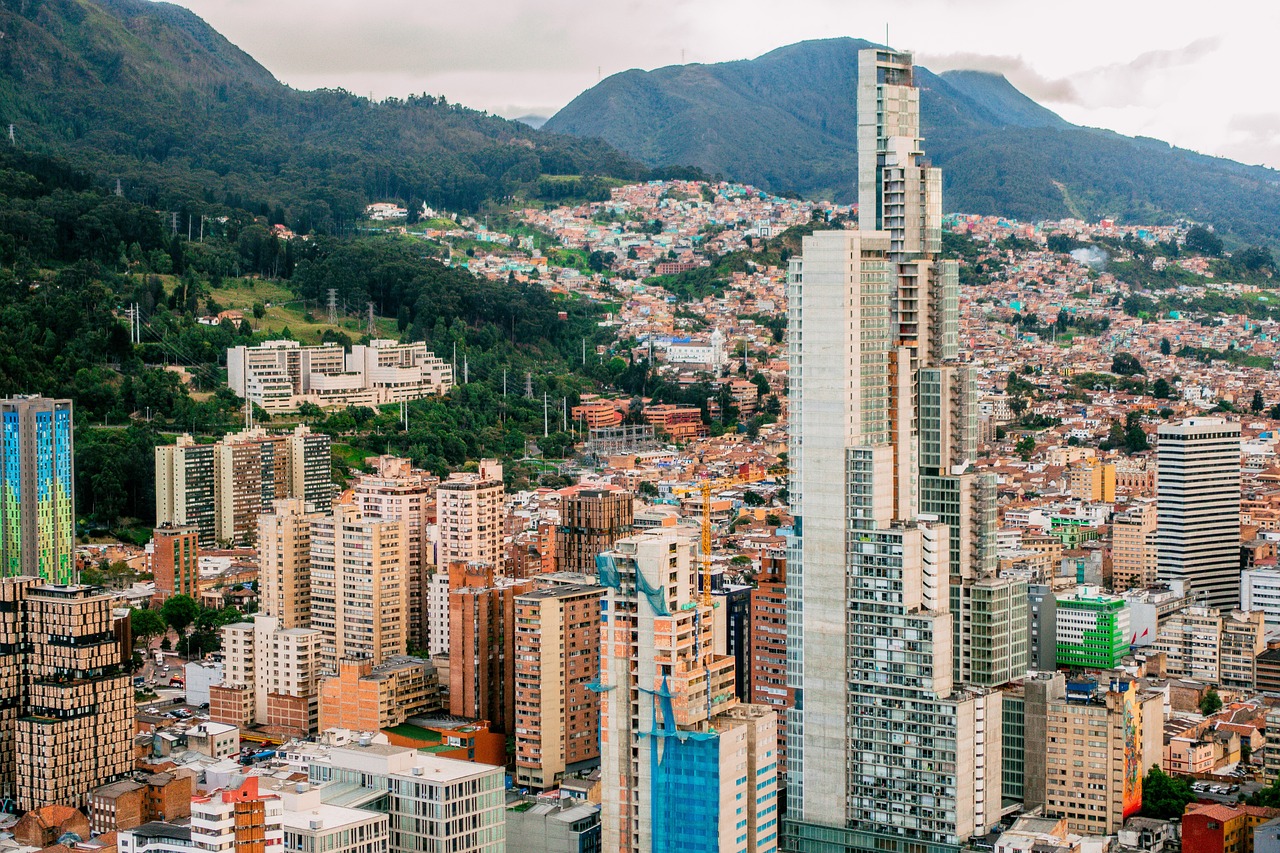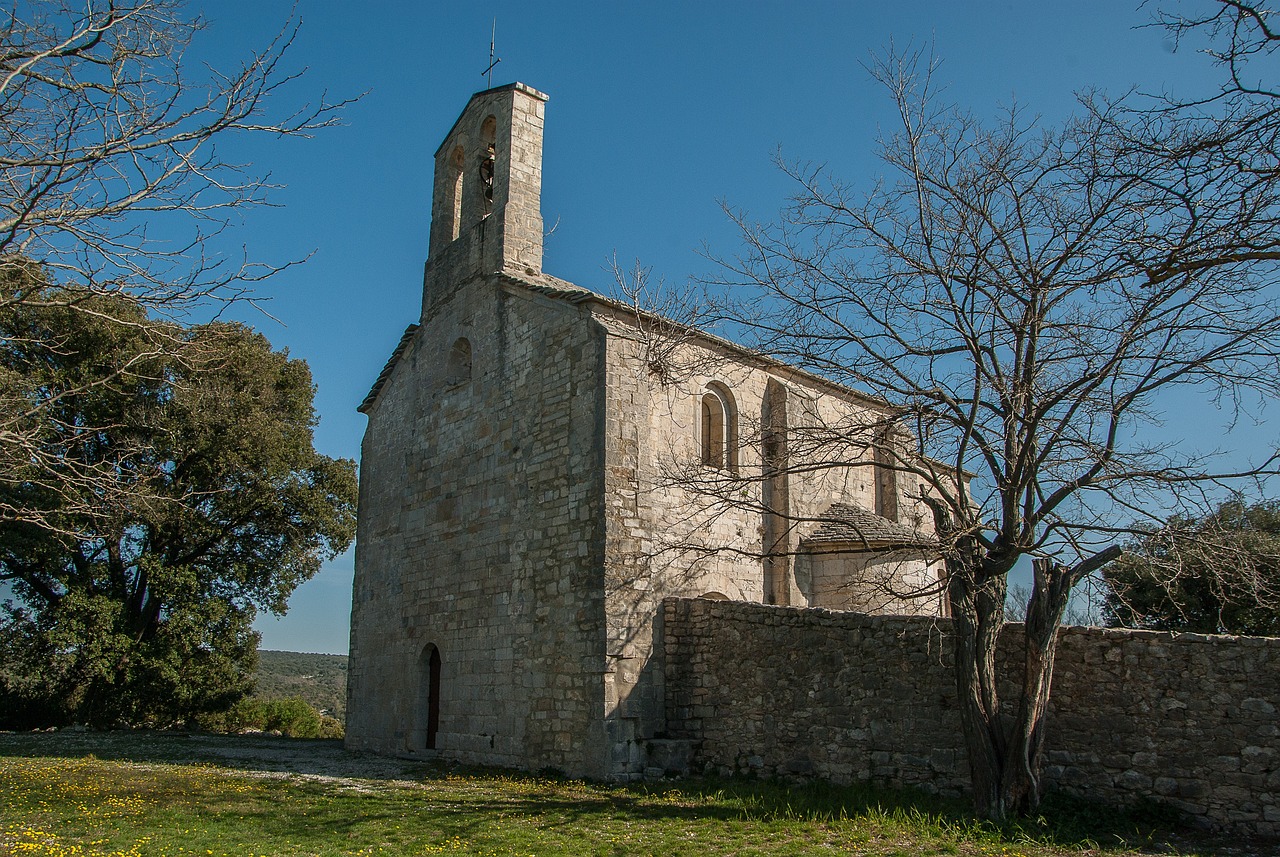Exploring Heritage Protection in Post-Conflict Societies
Exploring Heritage Protection in Post-Conflict Societies is a journey into the intricate world of preserving cultural treasures amidst the aftermath of turmoil and strife. In these societies, the remnants of the past hold not only historical significance but also serve as pillars for rebuilding identities and fostering reconciliation among divided communities.

The Importance of Heritage Protection
Preserving cultural heritage in post-conflict societies holds immense importance in the process of rebuilding identities and fostering reconciliation. The tangible and intangible elements of heritage, such as historical sites, artifacts, traditions, and languages, serve as key components of a community's identity and memory. By safeguarding these aspects, societies can reconnect with their past, strengthen their sense of belonging, and promote unity among diverse populations.
Heritage protection also plays a crucial role in promoting understanding and respect among different groups that may have been in conflict. By acknowledging and preserving shared cultural heritage, communities can find common ground and work towards mutual acceptance and cooperation. In this sense, heritage protection acts as a bridge between the past, present, and future, facilitating dialogue and healing in post-conflict environments.
Moreover, the preservation of cultural heritage can contribute to the overall well-being and resilience of societies emerging from conflict. By revitalizing historical sites and traditions, communities can boost tourism, create economic opportunities, and enhance social cohesion. Heritage protection not only safeguards the past but also paves the way for sustainable development and prosperity in the future.
Through heritage protection, post-conflict societies can reclaim their narratives, celebrate their diversity, and showcase their unique contributions to the world. By recognizing the importance of preserving cultural heritage, communities can build a foundation for a more inclusive, harmonious, and prosperous future.

Challenges Faced in Heritage Protection
Protecting heritage in post-conflict societies presents a myriad of challenges that require careful consideration and strategic planning. One of the primary obstacles is the physical damage inflicted on historical sites and artifacts during periods of conflict. The destruction caused by warfare not only erases tangible elements of a society's past but also undermines its cultural identity and collective memory. Rebuilding and restoring these heritage assets in a way that respects their historical significance while adapting to modern needs can be a complex and resource-intensive process.
Furthermore, the lack of funding and resources for heritage protection poses a significant challenge in post-conflict environments. Governments and local authorities often struggle to allocate sufficient budgets to safeguard historical sites and artifacts, especially when faced with competing priorities such as infrastructure development or social welfare programs. This financial strain can impede the implementation of comprehensive conservation strategies and limit the capacity to respond effectively to emerging threats or emergencies.
Another critical issue in heritage protection is the risk of looting and illicit trafficking of cultural artifacts in post-conflict regions. The instability and disruption caused by conflict create opportunities for organized crime networks and opportunistic individuals to exploit vulnerable heritage sites for personal gain. The illegal trade in antiquities not only deprives communities of their cultural heritage but also fuels conflict, corruption, and instability, perpetuating a cycle of destruction and loss.
Additionally, the lack of expertise and institutional capacity in heritage conservation can hinder efforts to protect and preserve cultural assets effectively. Post-conflict societies may face a shortage of skilled professionals, such as archaeologists, conservators, and museum curators, who are essential for managing and safeguarding heritage resources. Building local capacity and expertise in heritage conservation is crucial for ensuring the long-term sustainability of preservation efforts and empowering communities to take ownership of their cultural heritage.
Moreover, the complex legal and regulatory frameworks governing heritage protection can create bureaucratic hurdles and delays in post-conflict settings. Balancing the need to safeguard cultural assets with considerations of property rights, land ownership, and indigenous rights requires careful negotiation and collaboration among various stakeholders, including government agencies, local communities, and international organizations. Navigating these legal complexities while upholding ethical standards and respect for diverse cultural perspectives is essential for effective heritage protection in post-conflict societies.

International Frameworks for Heritage Protection
In the aftermath of conflicts, the preservation of cultural heritage plays a pivotal role in rebuilding identities and fostering reconciliation among communities. Historical sites and artifacts serve as tangible links to the past, connecting present generations to their roots and heritage. By safeguarding these treasures, societies can reclaim their cultural narratives and strengthen their sense of unity and belonging.
Despite the significance of heritage protection, post-conflict societies often face formidable challenges in safeguarding their historical sites and artifacts. Issues such as inadequate funding, lack of expertise, looting, and vandalism pose serious threats to the preservation efforts. Rebuilding infrastructure and establishing effective conservation strategies require concerted efforts and resources, which can be scarce in the aftermath of conflicts.
International organizations and agreements play a crucial role in supporting the conservation and protection of heritage sites in post-conflict areas. Frameworks such as the UNESCO World Heritage Convention provide guidelines and assistance to countries in preserving their cultural legacies. Through collaborative initiatives and funding mechanisms, these frameworks help post-conflict societies in safeguarding their heritage for future generations.
Engaging local communities in the preservation and promotion of their cultural heritage is essential for ensuring sustainable conservation efforts. By involving community members in decision-making processes and raising awareness about the value of heritage, societies can instill a sense of ownership and pride in their shared history. Community-led initiatives often lead to more effective preservation strategies tailored to the specific needs and aspirations of the people.
Modern technologies and innovative approaches have revolutionized the field of heritage conservation in post-conflict environments. From 3D scanning and virtual reconstructions to drone mapping and digital archives, these tools enable experts to document and protect cultural heritage with unprecedented accuracy and efficiency. Embracing technological advancements allows societies to preserve their heritage in dynamic and interactive ways.
Effective preservation and promotion of cultural heritage in post-conflict societies not only safeguard valuable assets but also generate economic benefits. Heritage tourism, artisanal crafts, and cultural events can contribute to local economies, create job opportunities, and stimulate sustainable development. By leveraging their cultural heritage, societies can harness economic growth while preserving their unique identities.
Educational initiatives and awareness campaigns play a vital role in promoting the value of heritage protection among the population. By educating communities about the significance of their cultural heritage and the threats it faces, societies can cultivate a sense of responsibility and stewardship. Through school programs, public outreach, and cultural events, awareness can be raised to ensure the preservation of heritage for future generations.
Examining specific examples of post-conflict societies that have effectively preserved and utilized their cultural heritage offers valuable insights into sustainable development and reconciliation. Case studies like the restoration of historic sites in Cambodia or the revitalization of cultural traditions in Rwanda demonstrate the transformative power of heritage conservation in rebuilding communities and fostering unity.
As post-conflict societies continue to navigate evolving challenges and opportunities in heritage protection, it is crucial to develop strategies for sustainable conservation efforts. Embracing innovative technologies, fostering community engagement, and leveraging international support are key factors in ensuring the long-term preservation of cultural heritage. By adapting to changing landscapes and embracing collaboration, societies can safeguard their heritage for generations to come.

Community Involvement in Heritage Preservation
Community involvement plays a crucial role in the preservation and promotion of cultural heritage in post-conflict societies. When local communities actively participate in safeguarding their heritage, it not only fosters a sense of ownership but also ensures the sustainability of conservation efforts. By engaging community members in decision-making processes regarding heritage preservation, a deeper connection to their cultural identity is established, leading to a shared responsibility for protecting valuable historical sites and artifacts.
Furthermore, involving local communities in heritage preservation projects can have a positive impact on social cohesion and reconciliation. By working together towards a common goal of safeguarding their shared heritage, people from diverse backgrounds can come together, bridging divides created by past conflicts. This collaborative approach not only preserves cultural heritage but also contributes to building trust and understanding among community members.
Community engagement can take various forms, such as organizing heritage awareness campaigns, educational workshops, and heritage-focused events that bring people together to celebrate their shared history. By creating platforms for dialogue and collaboration, communities can leverage their collective knowledge and resources to ensure the long-term protection and promotion of their cultural heritage.
Moreover, when local communities are actively involved in heritage preservation initiatives, there is a greater likelihood of sustainable development and economic benefits for the region. By showcasing their cultural heritage to visitors and tourists, communities can stimulate local economies through heritage tourism, creating opportunities for job creation and economic growth.
In essence, community involvement in heritage preservation is not just about safeguarding historical sites and artifacts; it is about empowering people to take pride in their heritage, build stronger bonds within their communities, and contribute to the overall development and reconciliation of post-conflict societies.

Technology and Innovation in Heritage Conservation
The preservation of cultural heritage in post-conflict societies holds a crucial role in rebuilding identities and fostering reconciliation. By safeguarding historical sites and artifacts, these regions can maintain their unique cultural identities and promote a sense of unity among diverse communities.
Preserving cultural heritage in post-conflict societies is essential for maintaining a connection to the past, fostering a sense of belonging, and promoting understanding among different groups. It serves as a tangible link to history and helps in shaping collective memories that contribute to the identity of a community.
Despite the significance of heritage protection, post-conflict societies often face challenges such as inadequate funding, lack of expertise, looting, and damage to sites due to ongoing instability. These obstacles hinder efforts to safeguard and preserve valuable cultural assets.
International organizations and agreements play a vital role in supporting heritage protection efforts in post-conflict areas. By providing expertise, funding, and guidelines, these frameworks help in the conservation and restoration of heritage sites, ensuring their long-term sustainability.
Engaging local communities in the preservation of their cultural heritage empowers them to take ownership of their history and traditions. By involving community members in decision-making processes and educational initiatives, heritage preservation efforts become more sustainable and inclusive.
Modern technologies and innovative approaches have revolutionized the field of heritage conservation in post-conflict environments. From 3D scanning and virtual reality to drones and GIS mapping, these tools enable accurate documentation, monitoring, and preservation of cultural heritage sites. By leveraging technology, conservationists can enhance their efforts to safeguard and promote heritage assets effectively.
Efficient preservation and promotion of cultural heritage in post-conflict societies can lead to economic benefits such as tourism revenue, job creation, and sustainable development. By capitalizing on the cultural heritage assets, communities can stimulate economic growth and improve livelihoods while preserving their unique heritage.
Educational initiatives and awareness campaigns play a crucial role in promoting the value of heritage protection among the population. By educating individuals about the significance of cultural heritage and its role in shaping society, communities can develop a sense of pride and responsibility towards preserving their shared history.
Examining specific examples of post-conflict societies that have successfully preserved and utilized their cultural heritage can provide valuable insights into effective conservation strategies. By learning from these case studies, other regions can adapt best practices and tailor their approaches to heritage protection accordingly.
As post-conflict societies continue to evolve, the challenges and opportunities in heritage protection also shift. By adopting sustainable conservation strategies, investing in technology, fostering community engagement, and promoting awareness, these societies can ensure the preservation of their cultural heritage for future generations.
Stay tuned for answers to common queries about heritage protection in post-conflict societies in our upcoming FAQ section!

Economic Impacts of Heritage Preservation
Preserving cultural heritage in post-conflict societies not only holds immense historical and cultural value but also has significant economic impacts. The conservation and promotion of heritage sites can serve as powerful drivers of economic growth and development, offering various opportunities for sustainable tourism, job creation, and local businesses.
When historical sites and artifacts are effectively preserved and promoted, they can attract tourists from around the world, boosting the local economy through increased visitor spending on accommodation, dining, transportation, and souvenirs. This influx of tourism revenue can contribute to the overall prosperity of the community and stimulate further investment in infrastructure and services.
Moreover, heritage preservation can lead to the revitalization of neglected areas, transforming them into vibrant cultural hubs that attract not only tourists but also investors and entrepreneurs. By leveraging the unique heritage assets of a post-conflict society, local businesses can thrive, creating a ripple effect of economic benefits that extend beyond the immediate vicinity of the heritage sites.
Additionally, the preservation of cultural heritage can enhance the overall quality of life for residents in post-conflict societies. By creating a sense of pride and identity rooted in their shared heritage, communities are more likely to invest in their surroundings, leading to improved living conditions, increased property values, and a sense of belonging that fosters social cohesion and stability.
Furthermore, heritage preservation can open up opportunities for cultural exchange and collaboration, attracting partnerships and funding from governmental agencies, non-profit organizations, and private donors interested in supporting sustainable development initiatives. These collaborations can result in capacity-building programs, skills training, and cultural events that not only preserve heritage but also stimulate creativity, innovation, and entrepreneurship.
In conclusion, the economic impacts of heritage preservation in post-conflict societies are multifaceted and far-reaching, offering not only financial benefits but also social and cultural rewards that contribute to the overall well-being and resilience of communities. By recognizing the value of their cultural heritage and investing in its conservation, post-conflict societies can pave the way for a prosperous and sustainable future.

Education and Awareness in Heritage Protection
The preservation of cultural heritage in post-conflict societies plays a crucial role in rebuilding identities and fostering reconciliation. By safeguarding historical sites and artifacts, these communities can reclaim their past and pave the way for a peaceful future.
Examining the significance of preserving cultural heritage in post-conflict societies for rebuilding identities and fostering reconciliation.
Discussing the obstacles and difficulties encountered in safeguarding historical sites and artifacts in regions recovering from conflict.
Exploring the role of international organizations and agreements in supporting the conservation and protection of heritage sites in post-conflict areas.
Highlighting the benefits of engaging local communities in the preservation and promotion of their cultural heritage after periods of conflict.
Exploring the use of modern technologies and innovative approaches to safeguard and document cultural heritage in post-conflict environments.
Examining the economic benefits and opportunities that arise from effectively preserving and promoting cultural heritage in post-conflict societies.
In the realm of heritage protection, education and awareness play a vital role in instilling a sense of value and responsibility towards cultural assets. By educating the population about the importance of preserving heritage, communities can develop a stronger connection to their past and a deeper appreciation for their shared history. Awareness campaigns can spark interest and engagement, encouraging active participation in heritage conservation efforts. Through educational initiatives, individuals can become advocates for heritage protection, ensuring the continued safeguarding of cultural treasures for future generations.
Analyzing specific examples of post-conflict societies that have effectively preserved and utilized their cultural heritage for sustainable development and reconciliation.
Considering the evolving challenges and opportunities in heritage protection in post-conflict societies and proposing strategies for sustainable conservation efforts.
Stay tuned for answers to common queries about heritage protection in post-conflict societies!

Case Studies of Successful Heritage Conservation
When it comes to successful heritage conservation in post-conflict societies, there are several notable case studies that exemplify the positive impact of preserving cultural heritage. One such example is the city of Dubrovnik in Croatia, which faced significant damage during the Balkan Wars in the 1990s. Through meticulous restoration efforts and community involvement, Dubrovnik has managed to revive its historic sites and transform them into thriving tourist attractions.
Another compelling case study is Cambodia's Angkor Wat, a UNESCO World Heritage site that endured the ravages of war and political instability. Through a combination of international support, technological advancements in conservation, and sustainable tourism practices, Angkor Wat has not only been preserved but has also become a symbol of national pride and a driver of economic growth for the country.
Furthermore, the city of Mostar in Bosnia and Herzegovina stands out as a poignant example of heritage conservation post-conflict. Mostar's iconic Stari Most (Old Bridge) was destroyed during the Bosnian War but was painstakingly reconstructed using traditional methods and materials, symbolizing resilience and reconciliation among the divided communities.
These case studies demonstrate the transformative power of heritage conservation in post-conflict societies, showcasing how the preservation of cultural landmarks can contribute to rebuilding identities, fostering reconciliation, and promoting sustainable development. By learning from these success stories, other regions recovering from conflict can draw inspiration and guidance on how to effectively protect and leverage their cultural heritage for the benefit of present and future generations.

Future Prospects for Heritage Protection
As we look ahead to the future of heritage protection in post-conflict societies, it is crucial to consider the evolving landscape of challenges and opportunities. With technological advancements and a growing global awareness of the importance of cultural heritage, there is great potential for innovative approaches to conservation efforts.
One promising prospect is the integration of digital technologies, such as 3D scanning and virtual reality, to create immersive experiences that bring heritage sites to life. By leveraging these tools, conservationists can not only preserve the physical structures but also enhance visitor engagement and understanding of the historical significance of these sites.
Furthermore, the shift towards sustainable tourism offers a unique opportunity for heritage protection. By promoting responsible travel practices and emphasizing the value of cultural heritage, post-conflict societies can generate economic benefits while ensuring the long-term preservation of their historical sites.
Collaboration between governments, local communities, and international organizations will be essential for the successful implementation of heritage protection strategies in the future. By fostering partnerships and sharing best practices, stakeholders can work together to overcome challenges and create a more sustainable approach to conserving cultural heritage in post-conflict environments.
Frequently Asked Questions
- What is heritage protection?
Heritage protection refers to the preservation and safeguarding of cultural sites, artifacts, traditions, and practices that hold historical or cultural significance. It involves efforts to prevent the destruction, looting, or degradation of these valuable elements of a society's past.
- Why is heritage protection important in post-conflict societies?
Preserving heritage in post-conflict societies is crucial for rebuilding identities and fostering reconciliation. It helps communities reconnect with their history, promotes a sense of unity, and contributes to the overall healing and recovery process after periods of turmoil.
- How can local communities contribute to heritage preservation?
Local communities play a vital role in heritage preservation by actively participating in the conservation and promotion of their cultural assets. Their involvement can range from sharing knowledge and traditions to engaging in restoration projects, ultimately fostering a sense of pride and ownership over their heritage.
- What are some challenges faced in heritage protection?
Challenges in heritage protection include inadequate funding, lack of awareness, illegal trafficking of artifacts, natural disasters, and insufficient legal frameworks. These obstacles often hinder the effective conservation and safeguarding of cultural heritage in post-conflict environments.
- How does technology contribute to heritage conservation?
Technology plays a significant role in heritage conservation by enabling the documentation, preservation, and virtual representation of cultural sites and artifacts. Innovations such as 3D scanning, drones, and digital archives help in monitoring and protecting heritage assets for future generations.



















